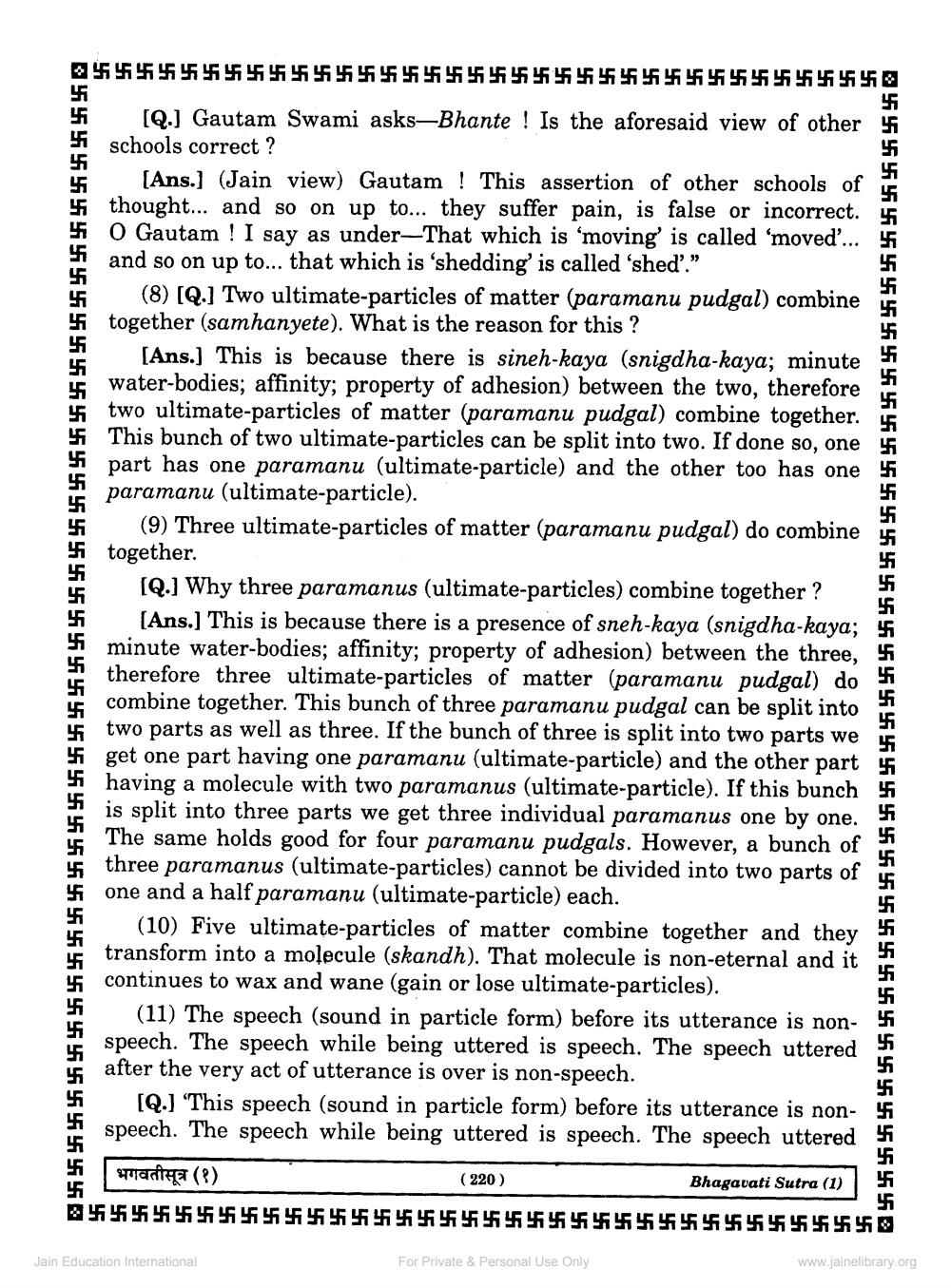________________
25511545454545454545454541414141414141414141414141414141414141414141
$$$$$$44444444444444
$$$$454545454545454 455 456 454 455 456 457 455 456 45 44 445 446 447 44 1$$ 4541414141414141
(Q.) Gautam Swami asks—Bhante ! Is the aforesaid view of other Si schools correct?
(Ans.] (Jain view) Gautam ! This assertion of other schools of thought... and so on up to... they suffer pain, is false or incorrect. O Gautam ! I say as under_That which is moving' is called 'moved'... and so on up to... that which is 'shedding' is called 'shed'."
(8) (Q.) Two ultimate-particles of matter (paramanu pudgal) combine 4 together (samhanyete). What is the reason for this ?
(Ans.] This is because there is sineh-kaya (snigdha-kaya; minute water-bodies; affinity; property of adhesion) between the two, therefore two ultimate-particles of matter (paramanu pudgal) combine together. This bunch of two ultimate-particles can be split into two. If done so, one part has one paramanu (ultimate-particle) and the other too has one paramanu (ultimate-particle).
(9) Three ultimate-particles of matter (paramanu pudgal) do combine together.
(Q.] Why three paramanus (ultimate-particles) combine together?
(Ans.) This is because there is a presence of sneh-kaya (snigdha-kaya; 5 minute water-bodies; affinity; property of adhesion) between the three, therefore three ultimate-particles of matter (paramanu pudgal) do combine together. This bunch of three paramanu pudgal can be split into two parts as well as three. If the bunch of three is split into two parts we get one part having one paramanu (ultimate-particle) and the other part having a molecule with two paramanus (ultimate-particle). If this bunch is split into three parts we get three individual paramanus one by one. The same holds good for four paramanu pudgals. However, a bunch of three paramanus (ultimate-particles) cannot be divided into two parts of one and a half paramanu (ultimate-particle) each.
(10) Five ultimate-particles of matter combine together and they transform into a molecule (skandh). That molecule is non-eternal and it continues to wax and wane (gain or lose ultimate-particles).
(11) The speech (sound in particle form) before its utterance is nonspeech. The speech while being uttered is speech. The speech uttered after the very act of utterance is over is non-speech.
(Q.) “This speech (sound in particle form) before its utterance is nonspeech. The speech while being uttered is speech. The speech uttered 41 mante (?)
(220)
Bhagavati Sutra (1)
$$$$
$$$$
$$$$$$
$$$44147555 $
步步步步步步步步步步步步步步步步步步步步步功%%%%%%%%%%%%
Jain Education International
For Private & Personal Use Only
www.jainelibrary.org




